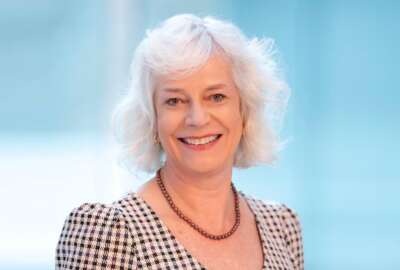Six months ago the Defense Information Systems Agency embarked on its second reorganization in about five years, now the organization in charge of the Defense Department’s IT says it’s seeing results.
“It’s been largely positive, the workforce for one has embraced the change,” Christopher Barnhurst, DISA deputy director, told Federal News Network. “I think we see a renewed emphasis on innovation. Our chief technology officer, Steve Wallace, is more heavily engaged, in various development efforts and defining the ‘to-be’ architecture state for the agency. We also have seen some of that flattening of the organization that we’re striving for where we’ve got a new leadership team in place.”
DISA announced its reorganization last October with an effort of aligning strategy, resources, structure and design around the same priorities from 2022 to 2024.
Those include prioritizing command and control, driving readiness through innovation, leveraging data as a center of gravity, harmonizing cybersecurity and user experience and empowering the workforce.
“We face a great global power competition, a changing cyber landscape with increasing risks and threats from state and non-state actors that together create an imperative for DISA to accelerate our efforts to connect and protect the warfighter in cyberspace,” DISA Director, Air Force Lt. Gen. Robert Skinner wrote in the plan. “This strategic plan focuses our efforts toward a shared transparency of understanding so that we can achieve the velocity of action needed to win.”
Barnhurst said DISA is seeing early returns from the changes.
“I personally lead what we call a set of a mission analysis groups,” he said. “There’s five different stakeholder groups that we’ve defined across the agency. They may be our culture- and trust-type organizations, they may be our field commands, our senior leadership team. We define these different groups. I meet with them periodically.”
Those groups keep leaders updated on what the workforce is thinking and what needs to be tweaked.
DISA also tried to cut back the bureaucracy within the agency in trying to balance what is too slow and where the organization wasn’t communicating and where things were too loose.
Barnhurst said the changes are helping to enable things like DevSecOps and zero trust.
“I’ve challenged all of our mid- to senior-level managers, those below the executive level, to think about culture and communication within their teams, and to foster an environment where change is accepted and expected,” he said. “We need to be constantly innovating and moving forward. That’s been a central theme of the agency. When it comes to new development efforts, one of the first questions the leadership’s going to ask is, ‘Are we using agile development methodologies?’ And if not, there has to be a real, real good reason why not for us to buy into that.”
To help with that the agency increased the number of main centers it has from two to four. One center focuses on security and enterprise. Another focuses on innovation. One drills in on infrastructure and operations and the final looks at cloud.
“Early returns are positive. But that’s something that Lt. Gen. Skinner and I certainly check in on,” Barnhurst said. “We ask if we need to make tweaks, we view it very much as a continuous improvement type effort.”
Copyright
© 2024 Federal News Network. All rights reserved. This website is not intended for users located within the European Economic Area.






